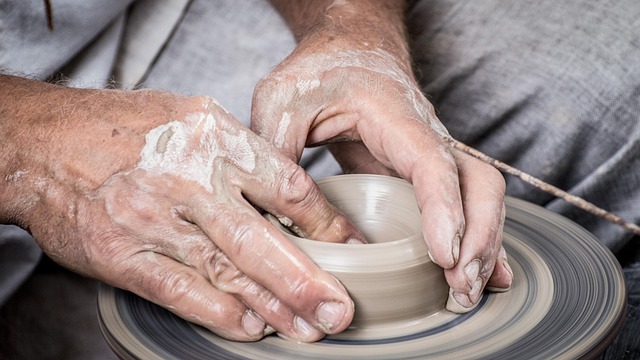Non-Surgical Body Sculpting offers safe, effective abdomen fat reduction using advanced technologies like HIFEM and targeted cooling. Clinical studies prove their safety and effectiveness for localized fat loss without surgery or downtime. Suitable candidates have realistic expectations and a healthy lifestyle. Post-treatment care includes cleaning, hydration, exercise focusing on core strength, and avoiding strenuous activities.
Looking to sculpt a slimmer, more defined abdomen without invasive surgery? Discover the world of non-surgical body sculpting for targeted fat reduction. This comprehensive guide explores innovative technologies and techniques, from laser-assisted procedures to the science behind non-invasive shaping. Learn about patient selection criteria for optimal results and essential post-treatment care to achieve and maintain your desired figure.
Understanding Non-Surgical Body Sculpting for Abdomen

Non-Surgical Body Sculpting for abdomen is a popular and increasingly accessible method for achieving a flatter, more toned stomach without the need for invasive procedures. Unlike traditional surgery, which involves incisions and recovery periods, non-surgical options utilize advanced technologies like high-intensity focused electromagnetic energy or targeted cooling to break down fat cells. These treatments are typically non-invasive, minimally discomforting, and can be performed in a doctor’s office setting.
This modern approach to fat reduction targets specific problem areas, including the abdomen, through precise application of energy. The process aims to reduce the number of fat cells in the targeted region, leading to a noticeable slimming effect. Many people find non-surgical body sculpting appealing due to its safety, effectiveness, and quick recovery time, making it an excellent alternative for those seeking an improved silhouette without major surgery.
Fat Reduction Technologies and Their Safety Profile

Fat reduction technologies, particularly non-surgical body sculpting procedures, have gained significant popularity in recent years. These advanced treatments offer an appealing alternative to traditional surgical options for abdomen fat reduction. One of the key advantages is their safety profile. Unlike invasive surgeries, non-surgical body sculpting employs minimally invasive techniques such as targeted energy delivery or cooling systems to break down and eliminate fat cells.
Commonly used technologies include radiofrequency, ultrasound, and cryolipolysis. Each has its unique mechanism but shares a commitment to safety. Clinical studies have extensively evaluated these methods, demonstrating their effectiveness in reducing stubborn abdominal fat without significant side effects. The procedure is typically well-tolerated, with temporary redness or mild discomfort being the most reported issues. Choosing a reputable clinic that employs state-of-the-art equipment and has trained professionals ensures an even safer experience for achieving one’s desired body contour.
Targeted Liposuction vs. Laser-Assisted Procedures

When it comes to fat reduction for the abdomen, there are various procedures available, each with its own set of benefits and considerations. Among them, targeted liposuction and laser-assisted procedures stand out as popular choices for non-surgical body sculpting.
Targeted liposuction involves using suction devices to remove fat cells from specific areas, including the abdomen. This method offers precise results, making it ideal for those seeking localized fat reduction. On the other hand, laser-assisted procedures utilize concentrated light energy to break down and eliminate fat cells. These techniques are often promoted as more comfortable options, with less downtime compared to surgical procedures. Both approaches have their merits, and the choice between them depends on individual preferences, budget, and the desired level of invasiveness.
The Science Behind Non-Invasive Abdomen Shaping

The science behind non-invasive abdomen shaping, also known as non-surgical body sculpting, has made significant strides in recent years. This cutting-edge approach leverages advanced technologies like high-intensity focused electromagnetic energy (HIFEM) and low-level laser therapy (LLLT) to target and break down fat cells without any incisions or recovery periods. HIFEM works by mimicking the effects of intense exercise, causing muscle contractions that disrupt fat cell walls, while LLLT promotes fat oxidation and cellular repair.
This non-surgical method offers a safe and effective alternative to traditional liposuction or invasive procedures, appealing to individuals seeking body contouring without the risks and downtime associated with surgery. By focusing on specific areas like the abdomen, waist, and hips, these technologies help reduce inch loss and improve overall body composition, providing patients with the sculpted figure they desire through a convenient and minimally disruptive process.
Patient Selection Criteria for Effective Results

When considering non-surgical body sculpting for fat reduction in the abdomen, patient selection is crucial for achieving effective and safe results. Ideal candidates are individuals with localized fat deposits around the abdominal area who maintain a healthy lifestyle and weight loss history. It’s important to consult with a qualified healthcare provider or aesthetic specialist who can evaluate your medical history, current health status, and specific goals.
During the consultation, factors such as age, skin elasticity, overall health, and commitment to post-treatment care will be considered. Patients should be realistic in their expectations, understanding that non-surgical body sculpting is most effective for spot reduction and not a solution for significant weight loss. A comprehensive assessment ensures that treatment is tailored to individual needs, maximizing results while minimizing risks associated with inappropriate candidate selection.
Post-Treatment Care and Lifestyle Modifications

After a successful Non-Surgical Body Sculpting session, proper post-treatment care is essential for optimal results. Patients should adhere to specific guidelines to ensure their skin’s comfort and promote healing. This includes keeping the treated areas clean and dry, avoiding strenuous activities for a period recommended by the specialist, and drinking plenty of water to aid in the body’s natural recovery processes.
Lifestyle modifications play a significant role in maintaining the post-treatment outcomes. A balanced diet, rich in nutrients and low in processed foods, can help reduce any residual swelling and support overall health. Regular exercise, focusing on core strengthening and gentle cardio, allows patients to tone their bodies while avoiding excessive strain on the treated areas. Combining these practices with adequate rest will contribute to a healthier, more sculpted physique post-Non-Surgical Body Sculpting procedure.
